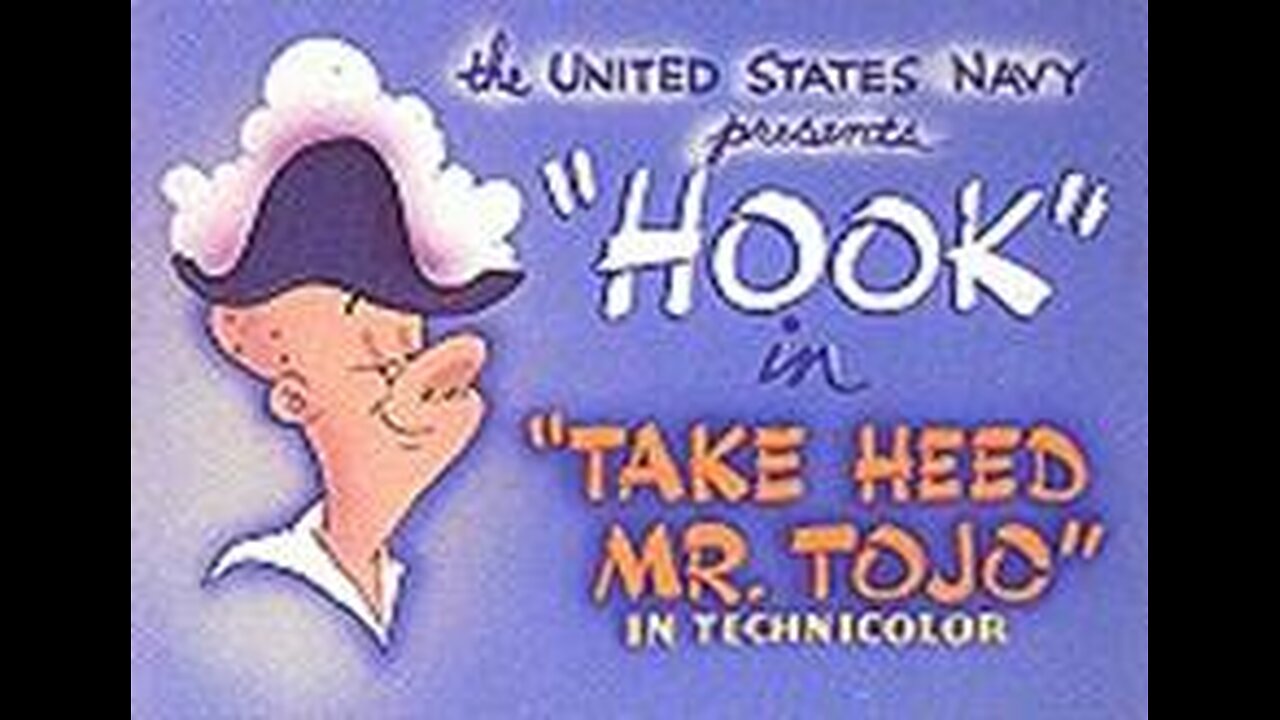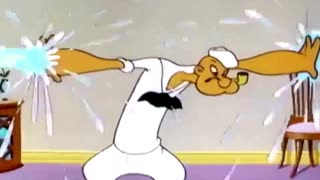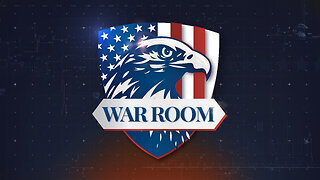Premium Only Content

Take Heed Mr. Tojo (Cartoon, 1943)
Take Heed Mr. Tojo is a 1943 American animated short film directed by Shamus Culhane and produced by Walter Lantz Productions for the U.S. Navy. It’s a World War II propaganda cartoon featuring Mr. Hook, a sailor character created by Hank Ketcham (later known for "Dennis the Menace"), designed to promote the purchase of war bonds. Unlike the later black-and-white Mr. Hook shorts made by Warner Bros., this one is in color and was intended for theatrical release to a broad American audience, not just military personnel.
The cartoon opens in a fictional 1953, ten years after its release, where an older, bespectacled Mr. Hook narrates a story to his young son in their cozy, post-war home. He recounts a wartime adventure from 1943 when he was a sailor. In the flashback, Hook receives a warning about an impending Japanese air raid and alerts his superiors. American planes scramble to intercept the threat, leaving their ship vulnerable. A Japanese pilot, hidden in a cloud, swoops in to attack. Hook, in a panic, flees but stumbles upon a stash of war bonds. In a creative twist, he uses these bonds as literal ammunition, loading them into his plane and taking off after the enemy. After a chase filled with slapstick action, Hook pelts the Japanese pilot with the bonds, causing him to crash onto an island, leaving only his chattering teeth behind—a caricature typical of wartime propaganda’s exaggerated, often racist depictions of enemies. Back in 1953, Hook explains to his son that the war bonds not only won the war but also funded their comfortable life, including their home, furniture, and a new plane.
The film’s animation is lively, with a clear Warner Bros. influence (thanks to shared talent pools during the war), and features George O’Hanlon—later the voice of George Jetson—as Mr. Hook. The short blends humor, patriotism, and a direct sales pitch for war bonds, reflecting the era’s urgency to rally civilian support. As a public domain work, having been made for the U.S. Navy, it’s a snapshot of 1940s wartime culture, complete with its propaganda tropes and historical context.
-
 6:16
6:16
Silver Screen Echoes
1 month agoPopeye The Sailor Man: Floor Flusher (Cartoon, 1954)
621 -
 19:15
19:15
Stephen Gardner
18 hours ago🟢YES! Trump did it! + Elon Musk DROPS BOMBSHELL on Democrat Party!
56.5K148 -
 29:24
29:24
Afshin Rattansi's Going Underground
1 day agoEx-CIA Advisor & Afshin Rattansi Have HEATED Exchange Over Ukraine Proxy War
1.23K32 -
 1:06:17
1:06:17
Mike Rowe
19 hours agoThe Mastermind Behind THIS Radical Idea At WSU Tech | Sheree Utash #448 | The Way I Heard It
85.8K13 -
 1:29:13
1:29:13
I_Came_With_Fire_Podcast
12 hours agoAncient Egypt's Tech & the Secret Temples of Malta
8.28K -
 LIVE
LIVE
GritsGG
2 hours agoWin Streaking! Most Wins 3499+ 🧠
190 watching -
 DVR
DVR
Bannons War Room
6 months agoWarRoom Live
34.1M8K -
 LIVE
LIVE
ttvglamourx
2 hours ago $0.66 earnedPLAYING WITH VIEWERS !DISCORD
104 watching -
 1:21:38
1:21:38
VapinGamers
3 hours ago $1.21 earnedTools of the Trade - EP04 Of Thumbnails and Titles, What's Important? - !rumbot !music
15.9K -
![Mr & Mrs X - [DS] Trafficking Empire – How Epstein Built His Web of Wealth and Deceit:Part 1 - Ep 5](https://1a-1791.com/video/fww1/f0/s8/1/o/k/J/d/okJdz.0kob-small-Mr-and-Mrs-X-DS-Trafficking.jpg) 52:11
52:11
X22 Report
4 hours agoMr & Mrs X - [DS] Trafficking Empire – How Epstein Built His Web of Wealth and Deceit:Part 1 - Ep 5
79.3K22